Flanges are used in piping systems to connect pipes with other equipment such as valves. Therefore they allow easy assembly, disassembly, and maintenance of the system. Different types of flanges are available as per ASME B16.5 and B16.47 standards. This article covers Different types of flanges with pictures and their applications.
We suggest you read this article on check valves, their working, and applications.
Types of Flanges
Various types of flanges in different materials (Stainless steel, Monel, etc.) are available to connect pipes and other fittings. Here is the list of different types of flanges.
- Welding Neck Flange
- Blind Flange
- Threaded Flange
- Socket Weld Flange
- Lap Joint Flange
- Slip-on Flange
1. Welding Neck Flange
The welding neck flanges consist of a long tapered hub. This tapered hub goes inside the pipe, whereas the flange’s other end is joined with the pipe or pipe fittings using Butt welding.

Welding neck type of flange has applications in high temperature and pressure applications.
2. Blind Flange
Blind flanges do not consist of any bore to flow the fluid. They are used to terminate the liquid flow in the piping system.
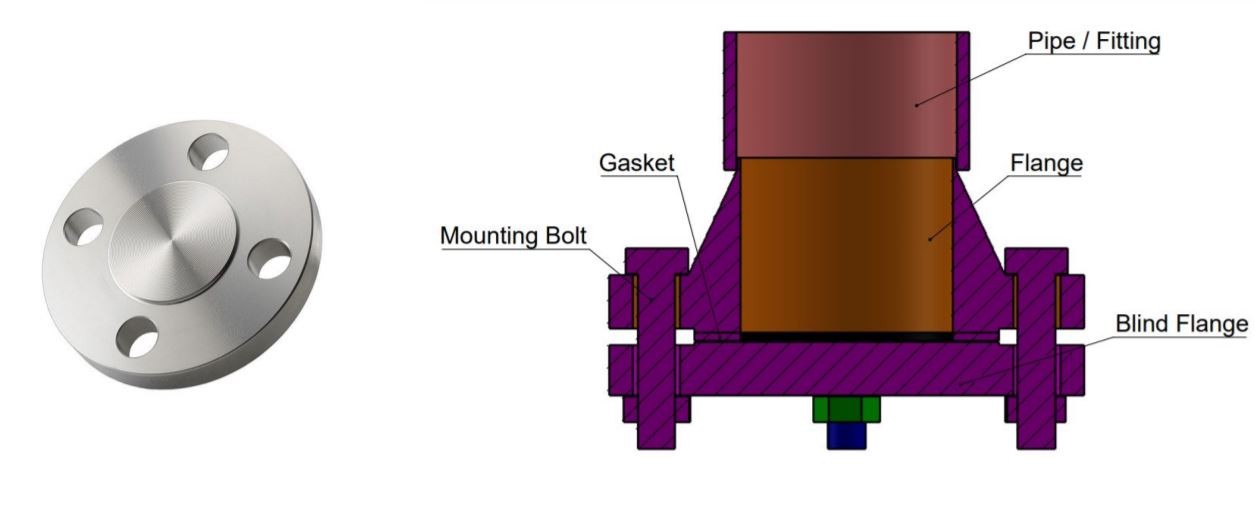
As shown in the above image, a blind flange is used at the end and connected with another flange using nuts, bolts, and gaskets.
3. Threaded Flange
Threaded flanges consist of threads inside the bore of the flange. Therefore we can connect one end of the pipe and pipe fitting with a threaded flange using a screw joint.
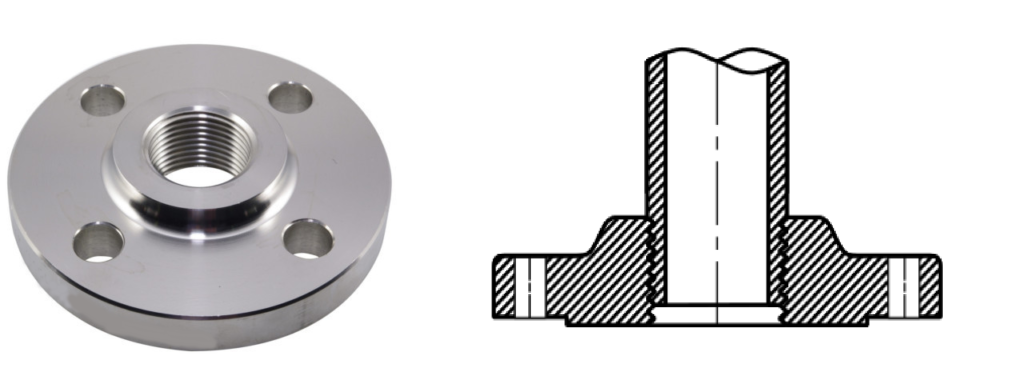
In this way, we do not require a welding joint to join the flange with the pipe. But in some cases, welding is done at some points to increase connection strength.
4. Socket Weld Flange
The pipe is inserted inside the flange socket while maintaining the required gap to allow expansion between the socket and pipe end in socket weld flanges. Afterward, the pipe and flange are fillet-welded to create the joint.
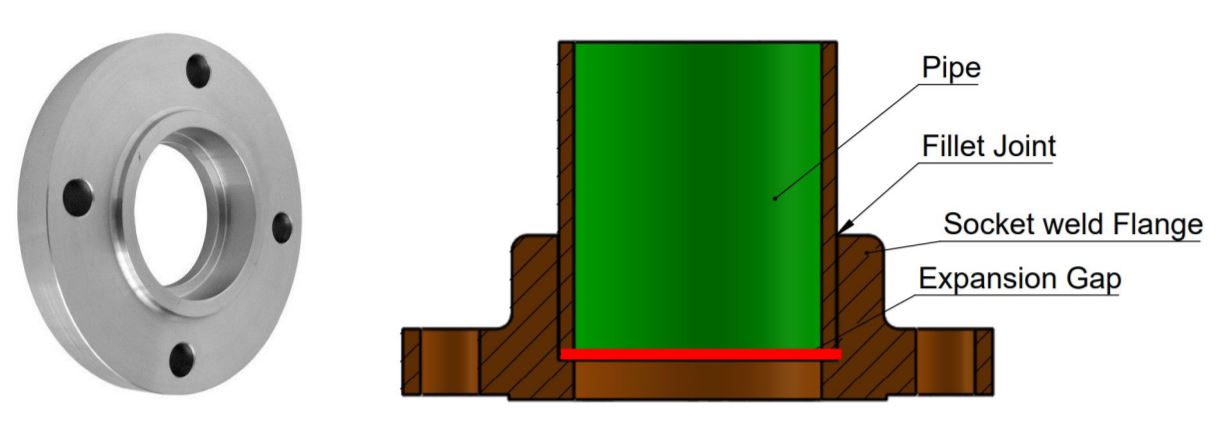
Socket weld flanges have an application to connect a large diameter pipe with a smaller diameters pipe. They are used for low temperature & pressure conditions.
5. Lap Joint Flange
The Lap Joint Flange consists of a stub end and lap joint ring flange. The stub end is placed over the lap joint flange. To create the joint, the stub end is butt-welded to the pipe and the flange ring is aligned with the mating ring.
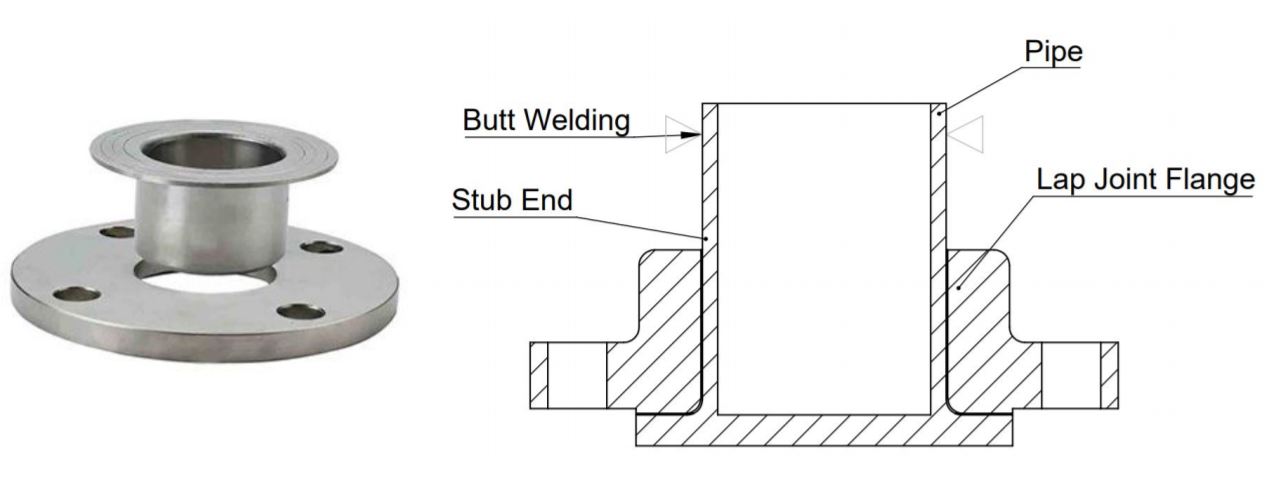
Lap joint types of flanges have applications for frequent disassembly of pipe fitting and where we need alignment between pipe fittings.
6. Slip-on Flange
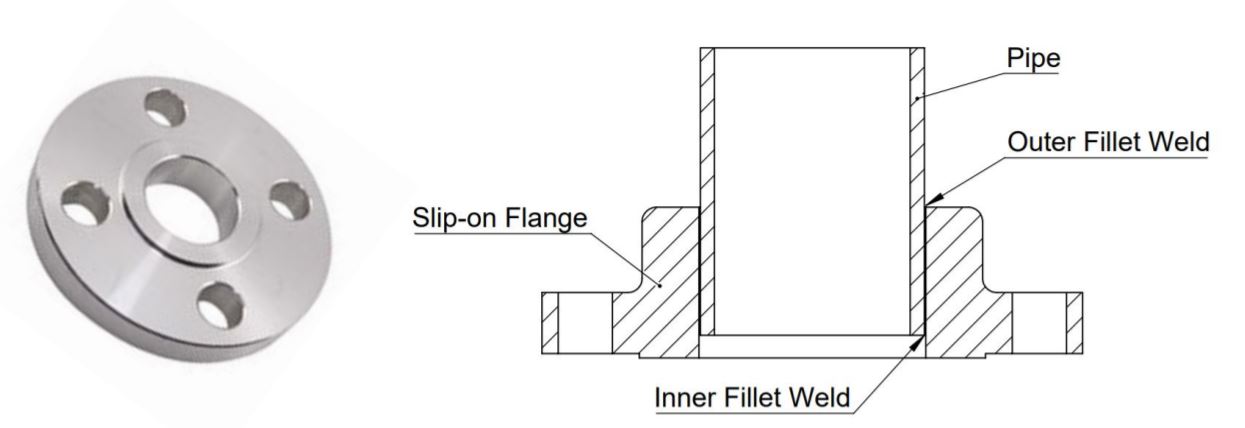
In slip-on flanges, firstly pipe to be connected is slid inside the flange. Afterward, inside and outside flanges are fillet welded to connect the pipe and pipe fittings to the flange.
Selection of Flanges
You should consider the following points during the selection of various types of flanges.
- Required type of flange
- Pressure Rating
- Applicable Standard (ASME or DIN)
- Flange Facing
- Flange Material
- Size of the Flange
- Flange Tolerance
- Wall thickness of the flange.
We will keep adding more information on the Various types of Flanges with pictures used in the piping system. Please add your comments or questions on the various types of Flanges in the comment box. We suggest you also read this article on various types of valves used in piping systems and their applications.

Add a Comment